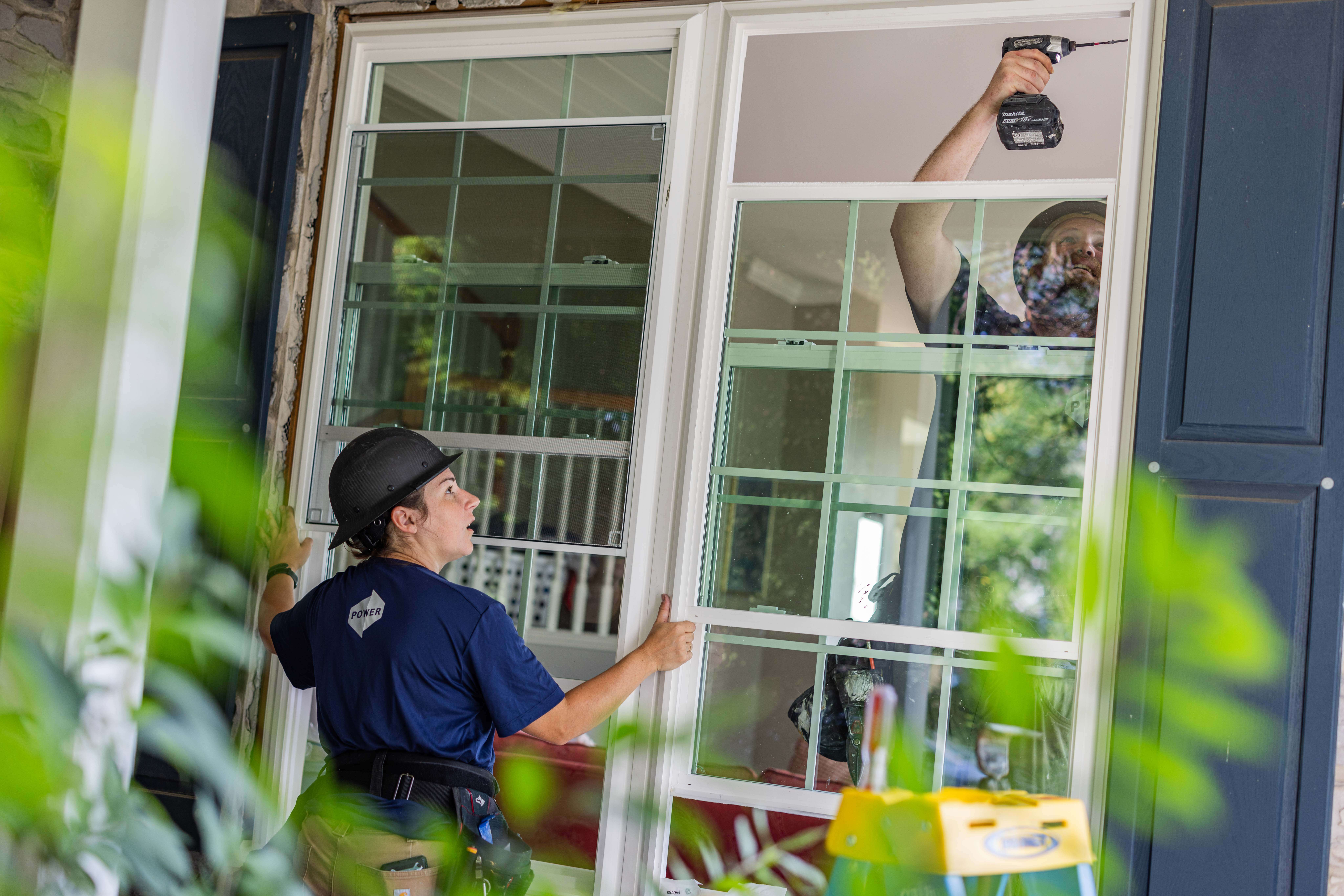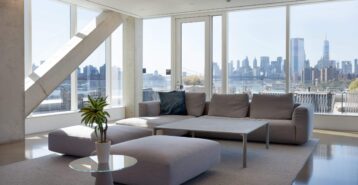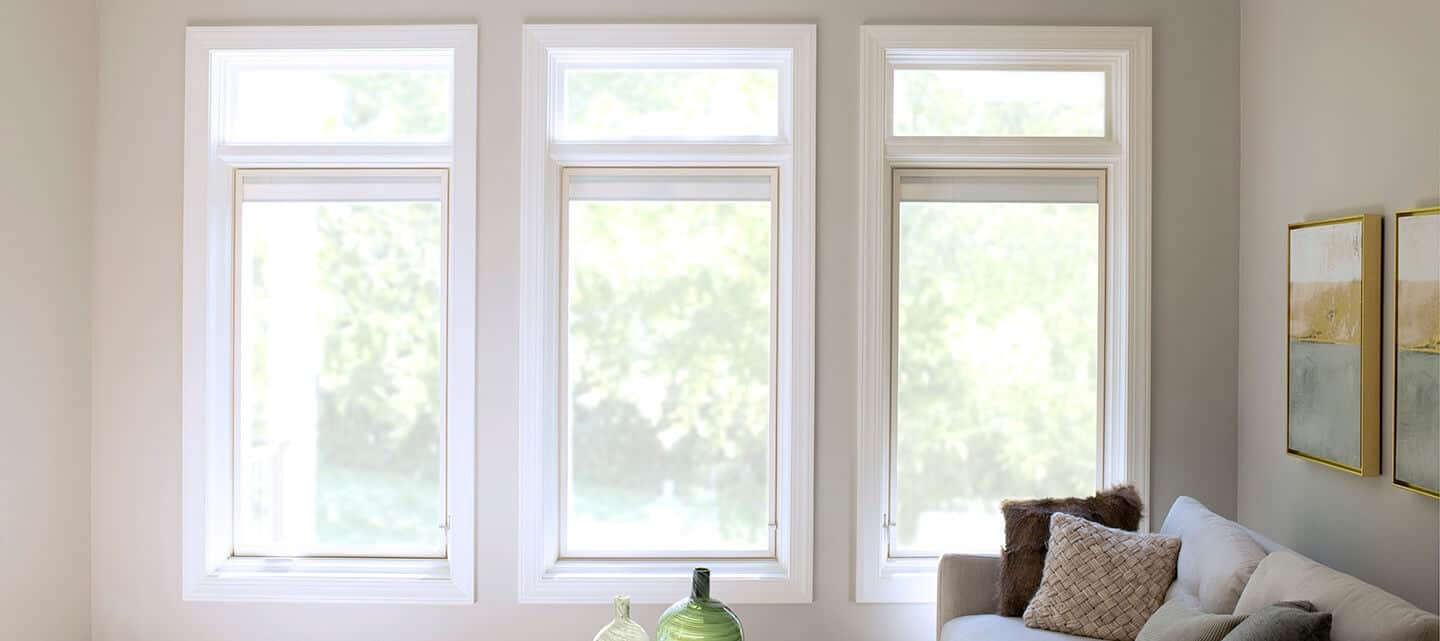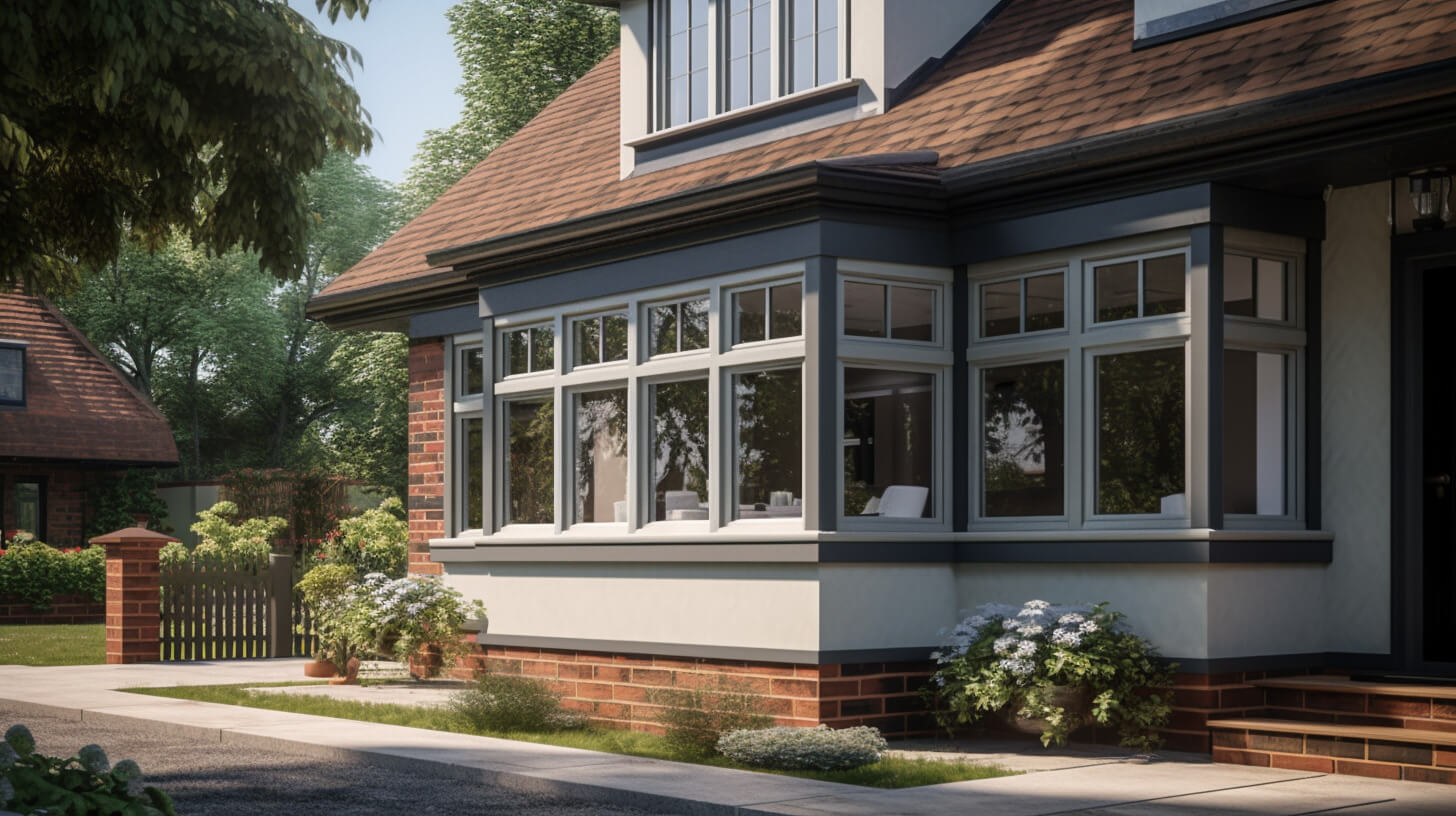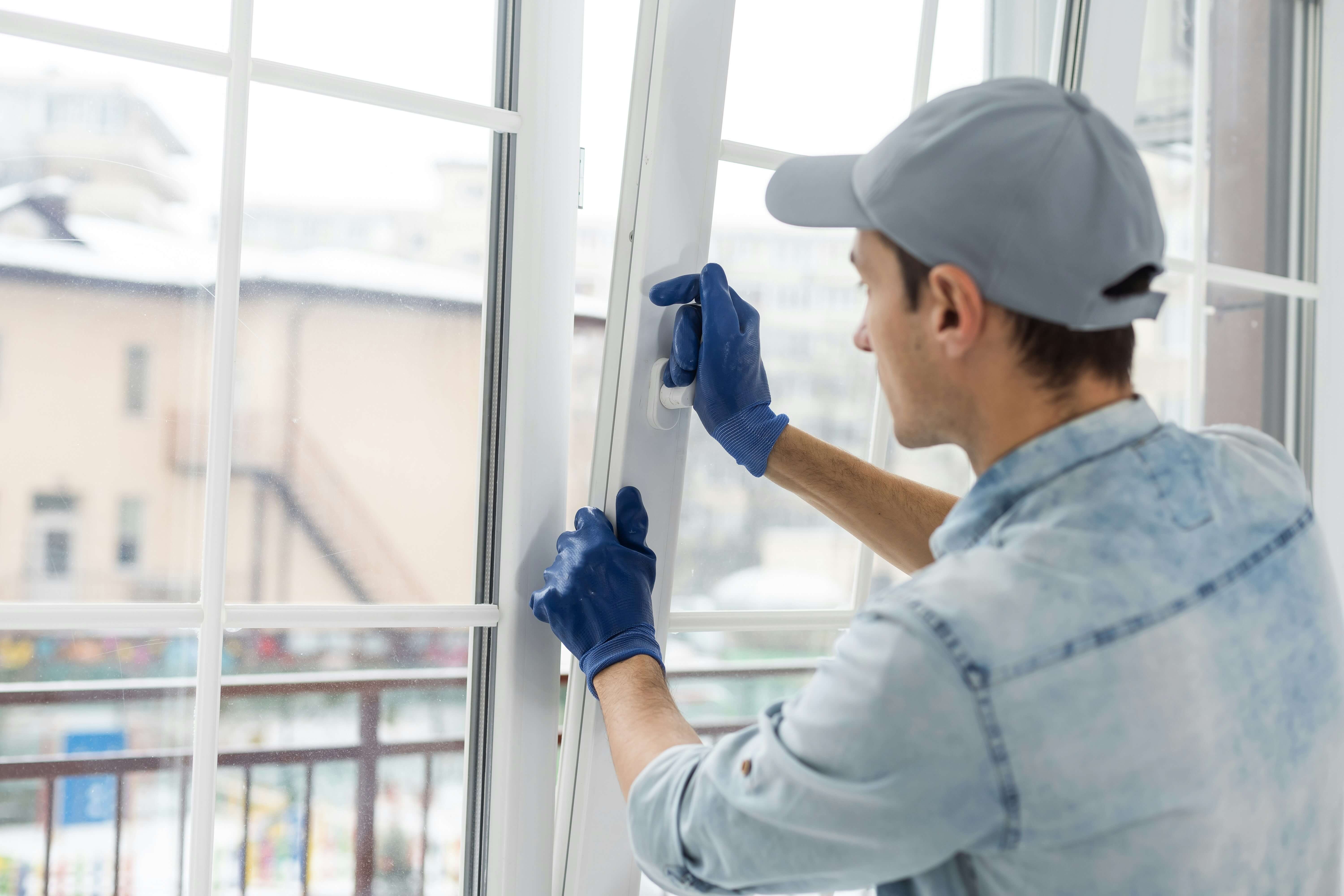What Are the Different Types of Windows?
There are more than 20 window types available. Out of those, eight rank as the most popular:
We break each of these down below, along with their pros, cons, and average cost. But before we dive in, here’s what to know about window types.
How to Use Our Window Type Tool
We know that choosing the right window type can feel stressful. That’s why we created a quiz at the top of this page to help.
To get our professional recommendation, just tell us:
- What room you need a window in
- If you want the window to open
- What you want most from your window
- What your climate is like
Then, we’ll show you the top three window types that fit your needs. We never require an email address to see your results.
8 Most Popular Window Types
Here are the window types most homeowners choose for their window replacement project, pros and cons of each, and average cost.
1. Single-Hung Windows
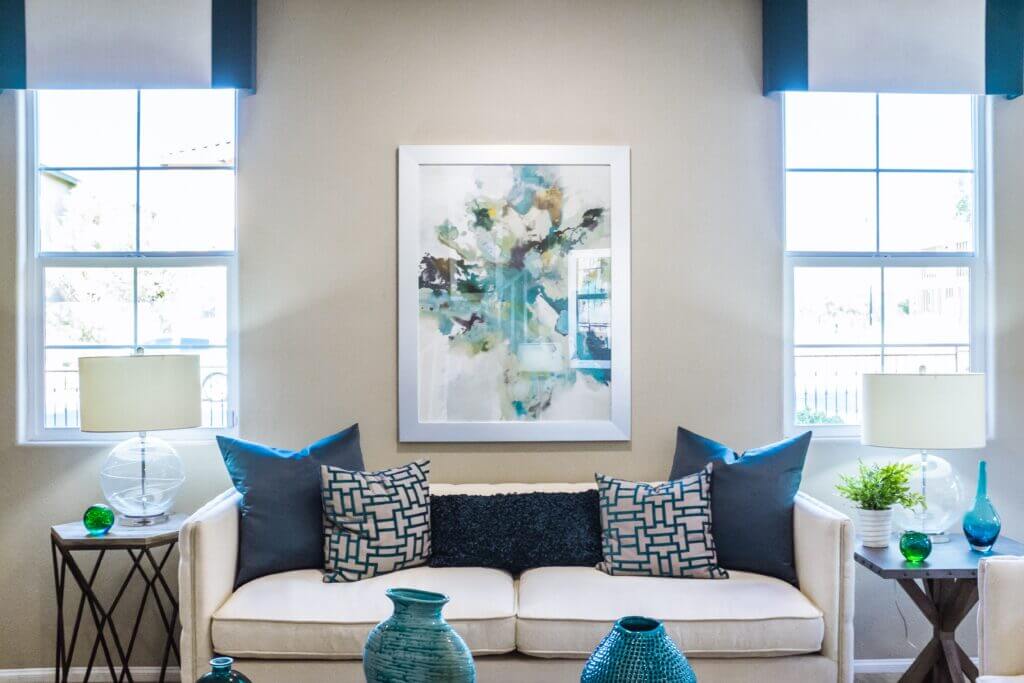
How It Works: Single-hung windows have a traditional design with two panes; only the bottom sash opens upward, while the top sash remains fixed.
Pros: Very affordable and easy to operate; simple, classic look that suits most home styles. Fewer moving parts mean potentially lower maintenance.
Cons: Provides limited ventilation (only opens halfway). The fixed upper pane makes cleaning the exterior of the top sash difficult from inside. Also offers slightly less airflow than a double-hung window.
Best for: Hallways, stairwells, and other areas that don’t require extensive ventilation. Also a budget-friendly choice for bedrooms, basements, and living rooms (works anywhere a double-hung would, if cost is a priority).
Cost Range: Approximately $400 to $850 per single-hung window, on average.
2. Double-Hung Windows
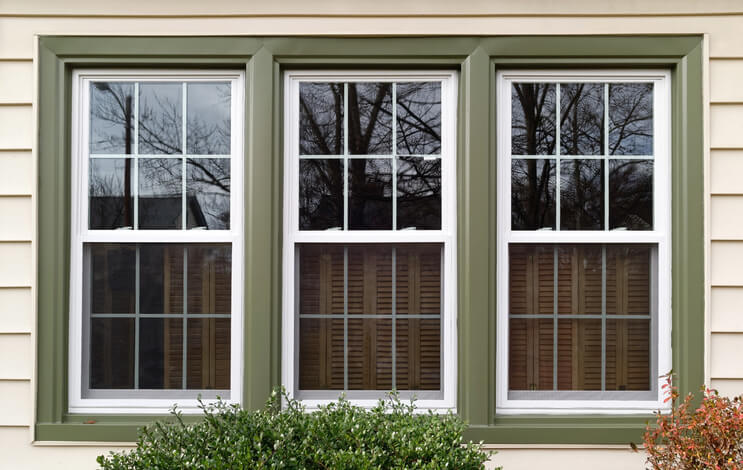
How It Works: Both the lower and upper sashes are operable, sliding up or down. Many double-hung windows also tilt inward for easy cleaning.
Pros: Offers versatile ventilation. You can open the top, bottom, or both sashes partway to improve airflow. Easy to clean (thanks to tilt-in panels) and very common, available in many sizes and materials. A safe choice for families since opening the top sash only can keep it out of reach of children and pets.
Cons: More moving parts mean slightly higher chance of air leakage compared to single-hung. Generally a bit more expensive than single-hung windows.
Best for: Bedrooms, living rooms, kitchens, and bathrooms – any room where you want ample ventilation and the ability to easily clean the window. They are especially good for upper-floor rooms, since opening the top sash can release hot air near the ceiling.
Cost Range: Approximately $430 to $915 per window, on average.
3. Casement Windows
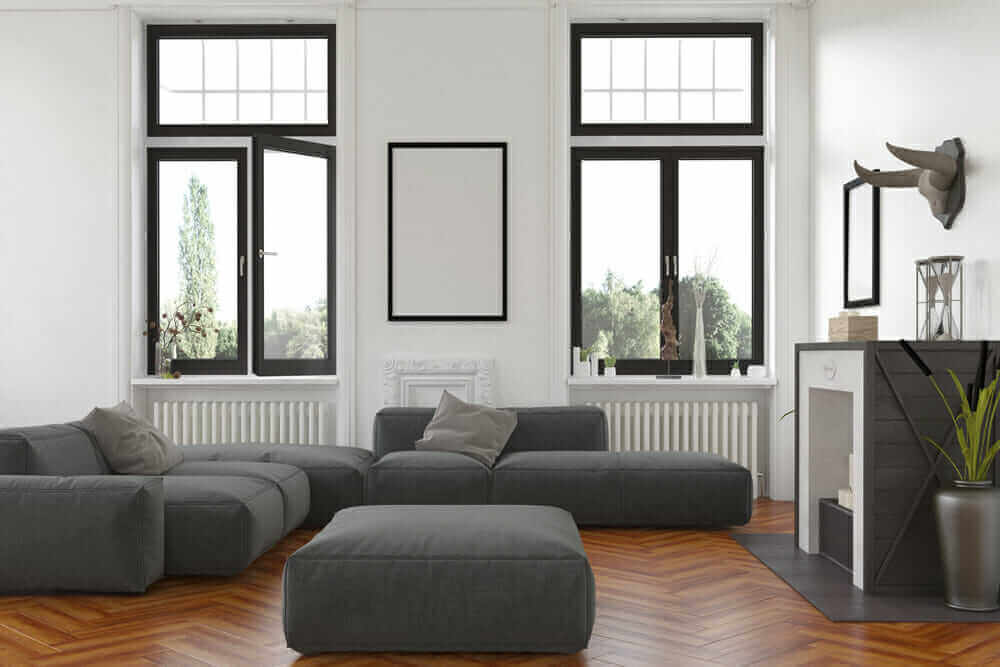
How It Works: A casement window operates via a crank handle. The window sash swings outward (side-hinged) like a door when opened, rather than sliding.
Pros: Allows for excellent ventilation – opening fully means it can catch side breezes. Offers a clear, unobstructed view (no center rail splitting the glass), almost like a picture window when closed. When locked, it seals tightly all around for great energy efficiency, minimizing drafts.
Cons: When open, the projecting sash could be a safety hazard (especially on lower floors or near walkways). Not ideal near high-traffic exterior areas (the sash might obstruct pathways). Size limitations: Very large casement sashes can strain hinges, so big openings may need to be split into multiple windows.
Best for: Kitchens, bathrooms, and living areas where you want maximum airflow. Common above kitchen sinks (easy to crank open) and in modern-style homes seeking large glass panes. Be cautious using casements on upper floors if you have young children (the wide opening could be a fall risk without safety features).
Cost Range: Roughly $600 to $1,270 per window, on average (varies with size and frame material).
4. Sliding Windows
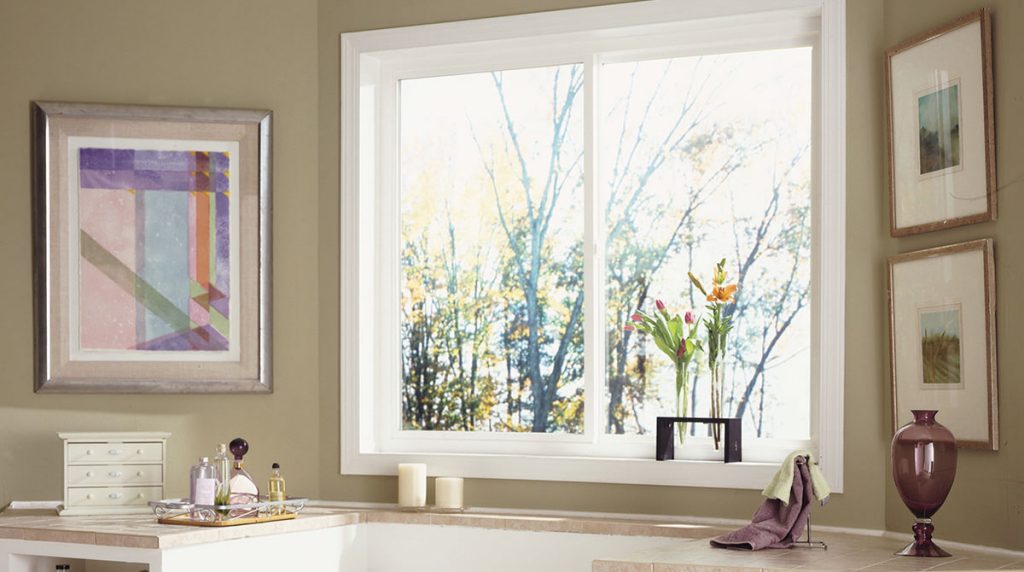
How it works: Opens by sliding horizontally along a track (one sash slides over the other). Similar mechanism to a single-hung, but side-to-side instead of up-down.
Pros: Easy to use for people of all ages, no heavy lifting, just slide it open. Great for wide, short openings or rooms with limited vertical space. Often larger widths are possible than single/double-hung, so they can provide expansive views and lots of light. Ventilation is adjustable by sliding open as much or little as you want.
Cons: The bottom track can collect dirt and debris, requiring periodic cleaning to ensure smooth operation. Generally not as airtight as crank or fixed windows, slightly less energy efficient than casement or awning styles due to the sliding seal. Large sliders can also become heavy or hard to slide over time if the rollers wear out.
Best for: Bathrooms, kitchens, or any space with a wide wall area and limited vertical clearance. They work well above kitchen counters or in basements (egress sliders) and are also popular for contemporary-style living rooms and bedrooms that favor a low, horizontal window profile.
Cost Range: Typically around $775 to $1,650 each, depending on size and materials.
5. Awning Windows
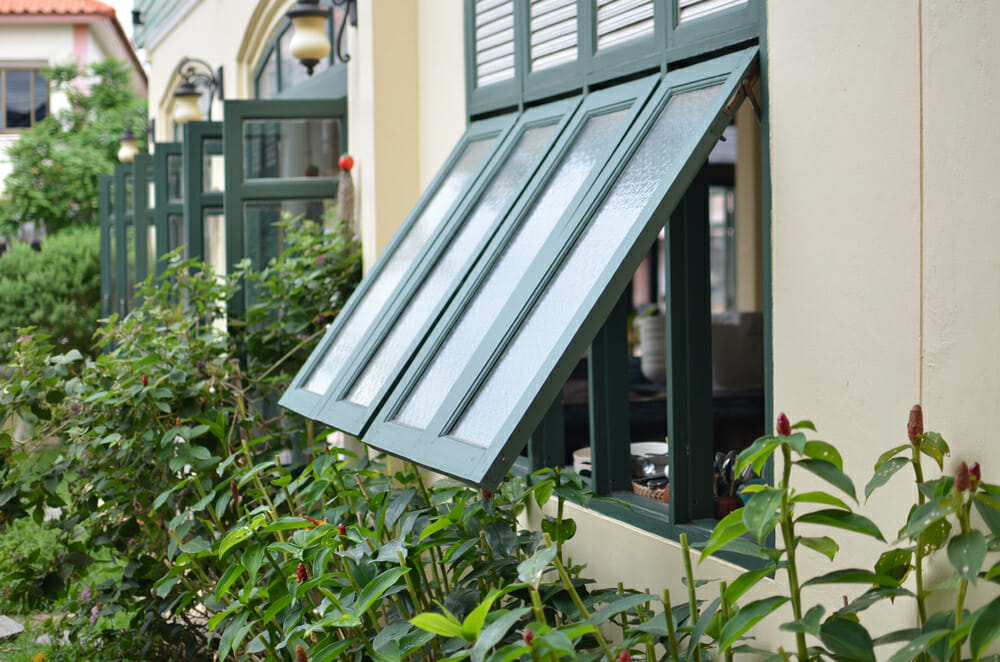
How It Works: Hinged at the top, awning windows swing outward from the bottom, forming an “awning” effect when open (hence the name). Usually operated with a crank.
Pros: Excellent for ventilation even during rain – because the glass creates a mini roof when open, rainwater is shed away, allowing you to let fresh air in without water coming inside. They seal tightly when closed, offering good energy efficiency similar to casements. Often smaller in size, which also makes them more secure (harder to break into) and budget-friendly.
Cons: Generally smaller than other types, so one awning window might not illuminate a large room as much. They need clear exterior space to open outward (no bushes, screens, or obstacles directly outside). Also, while small size is good for security, it means awnings may not work as the primary egress exit in a bedroom.
Best for: Bathrooms and kitchens – places where you want ventilation in damp conditions (they vent steam and humidity well). Also popular in basements (installed high on a wall) because they can meet egress requirements if sized correctly and are very secure against intrusion.
Cost Range: Around $480 to $1,100 per window, on average.
6. Bay Windows
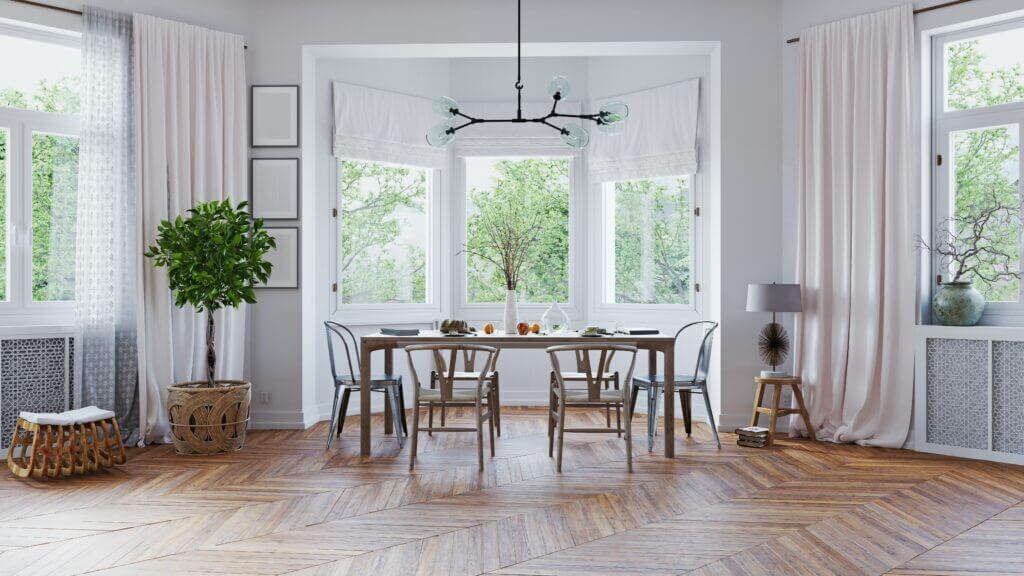
How It Works: A bay window protrudes outward from the exterior wall and is typically made of three joined panels: A large fixed center window flanked by two angled side windows.
Pros: Expands interior space and creates a cozy nook or shelf area for seating or decor. Maximizes views from multiple angles and adds significant curb appeal and character to your home. The side panels often open, offering a mix of panoramic views and airflow.
Cons: High cost — bay windows are among the most expensive to install. The projection may require additional structural support, and the joined seams can create potential points for energy loss (though good installation minimizes this).
Best For: Living rooms, dining areas, kitchens, or master bedrooms where you want a statement feature, extra light, and a possible reading bench or plant shelf.
Cost Range: Typically $1,700 to $4,000 or more, depending on size and complexity.
7. Picture Windows
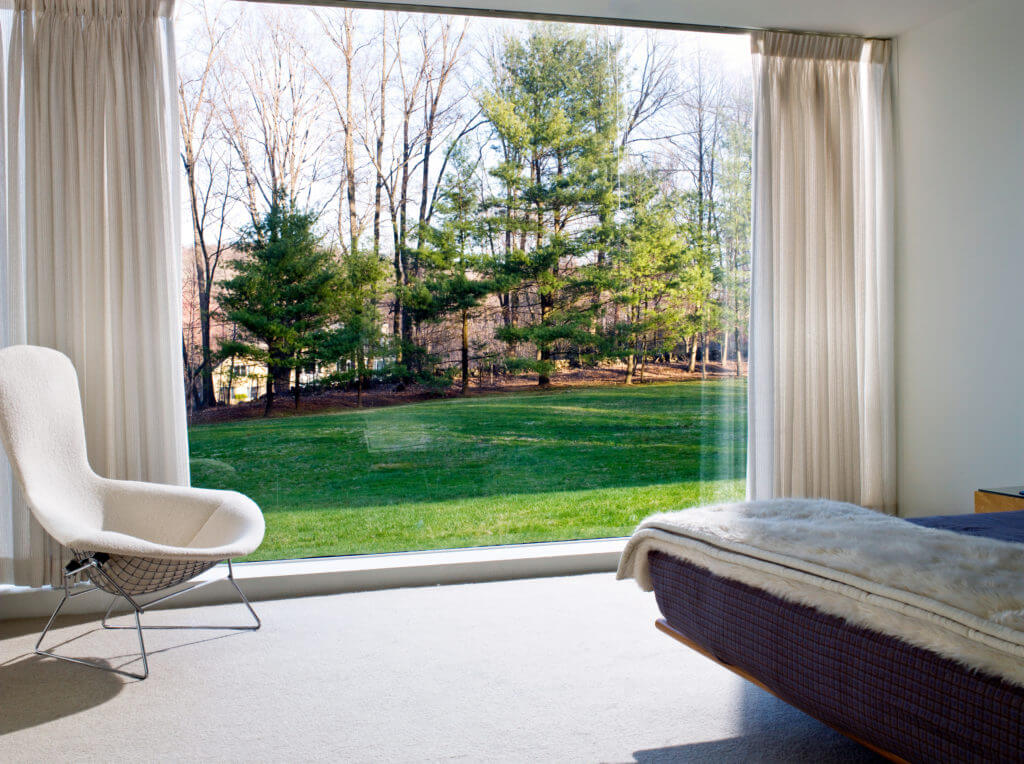
How It Works: A large fixed window that does not open. Essentially a big pane of glass framed on the wall. It “pictures” the outside view like a big photo frame.
Pros: Offers unobstructed views and tons of natural light since there are no muntins (grids) or sash lines in the middle. Very energy efficient because it’s a sealed, non-opening unit. No moving parts means fewer gaps for air to leak. Also typically low maintenance (nothing to lubricate or adjust) and often cheaper than windows with complex hardware.
Cons: No ventilation – since it can’t open, you’ll need other operable windows in the room for airflow. Because it’s just glass, large picture windows can be prone to heat transfer. You might get solar heat gain in summer and heat loss in winter (especially if not double-paned or coated), which could increase energy costs. Also, in bedrooms it cannot serve as an egress exit, so code will require an additional operable window.
Best for: Rooms where you want to maximize scenery and light without the need for opening the window. Common in living rooms, great rooms, or stairway landings where a dramatic view or sunlight is desired. Often used in combination with other window types (for instance, a picture window flanked by casements for ventilation).
Cost Range: About $600 to $2,500 each, depending on size and glass specifications.
8. Skylight Windows
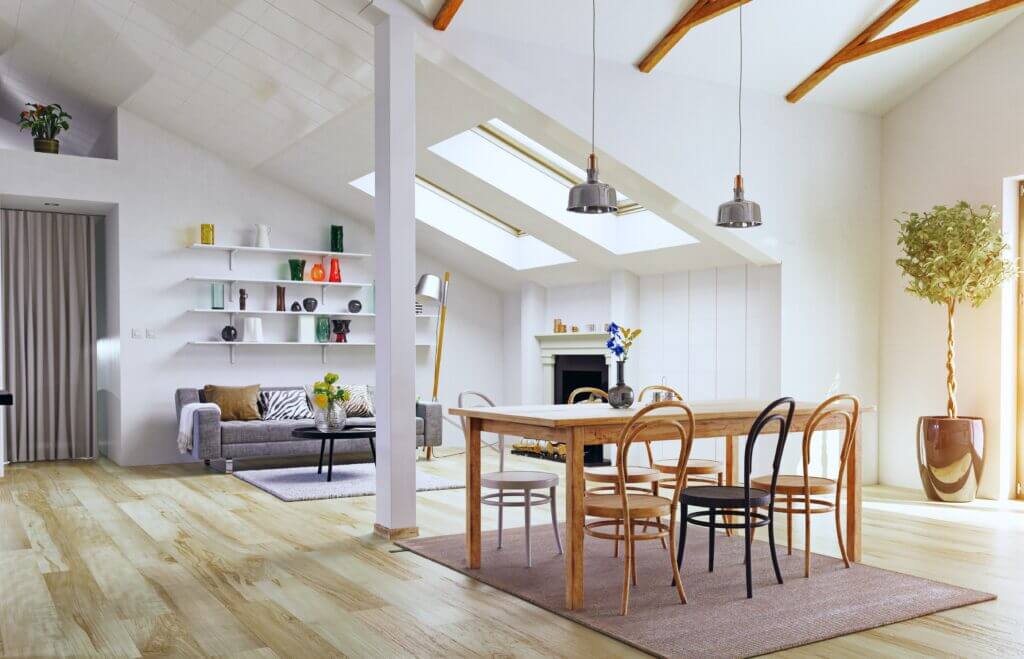
How It Works: A window installed in the ceiling or roof of a home. Skylights can be fixed (non-opening) or operable (venting), and some operable models are remote-controlled or have sensors (for rain closure, etc.). Tubular skylights (also called sun tunnels or solar tubes) are another option; they use a reflective roof-to-ceiling tube to bring concentrated natural light into small or interior spaces.
Pros: Brings natural light to areas under the roof where traditional windows aren’t feasible. Great for maintaining privacy while still getting daylight (e.g., in a master bathroom or interior room). Adds architectural interest and can make small or dark spaces feel larger and more inviting. Venting skylights can release hot air that rises, improving ventilation. In real estate, a well-placed skylight can be a selling point, potentially increasing home value.
Cons: Installation must be done perfectly to avoid leaks. A poorly sealed skylight can allow water in. They can also contribute to heat gain in summer and heat loss in winter (heat rises out in cold weather, and sun beams in during hot weather), so high-quality glass and shades are important. Operable skylights and those with blinds are more expensive, and even fixed skylights can be costly to add to an existing roof. Also consider that skylights will let in light very early in the morning, which might be unwanted in a bedroom unless you have a way to cover them.
Best for: Bathrooms, kitchens, lofts, upstairs hallways, or any dark area where adding a wall window is impractical. They’re also used in small houses or tiny homes to introduce light and make the space feel bigger. Many people avoid installing new skylights in bedrooms due to the light and energy concerns, but existing ones can be managed with shades.
Cost Range: Varies widely; roughly $1000 to $3,000 including installation, depending on size, glass features, and whether it’s fixed or operable.
Other Window Styles to Consider
Beyond the most popular styles above, there are many specialty windows and design options available. These may serve specific purposes or aesthetics. Here are a few additional types of windows for unique needs or architectural flair:
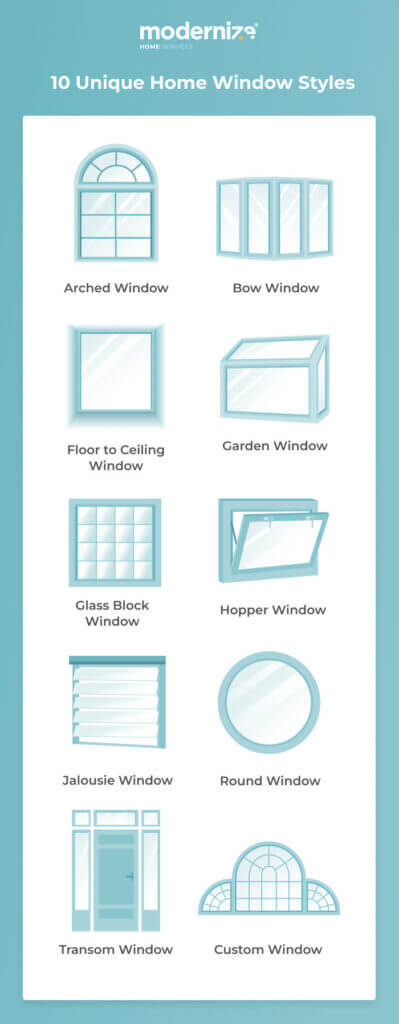
- Arched Windows: Rounded top windows that add elegant architectural detail. Often fixed or placed above rectangular windows. They cost more but boost curb appeal.
- Bow Windows: Similar to bay windows but curved with 4 to 6 panels. Popular on Victorian-style homes and create a soft, rounded exterior look.
- Floor-to-Ceiling Windows: Large windows that span an entire wall height, maximizing light and views. Common in modern designs and expensive but dramatic.
- Garden Windows: Small, box-shaped windows that extend out like a mini greenhouse — great for plants, typically above kitchen sinks.
- Glass Block Windows: Thick, semi-opaque blocks used for privacy while letting in light. Common in bathrooms and basements; strong but don’t open.
- Hopper Windows: Hinged at the bottom and open inward. Good for basements and small bathrooms, seal tightly when closed.
- Jalousie Windows: Horizontal glass slats that open like blinds. Great airflow but poor energy efficiency and security; mainly used in sunrooms or retro designs.
- Round & Oval Windows: Decorative circular or oval windows, often fixed, used as accent pieces in historic or unique architectural styles.
- Transom Windows: Small windows above doors or larger windows to add light and style; usually fixed in modern homes.
- Custom Windows: Made to your exact size and shape. More expensive (25% to 75% higher) but ideal for unique designs.
| Room | Window Type | Why We Recommend It |
|---|---|---|
| Living Room | Bay, Picture, and Casement | Expansive views and lots of light. |
| Kitchen | Sliding, Garden, and Casement | Easy to open, provide light for herbs and plants, and offer great ventilation. |
| Bedroom | Double-hung, Casement, and Awning | Versatile ventilation to encourage air flow and allow for lots of light. |
| Bathroom | Awning, Glass Block, and Hopper | Great for privacy and small spaces while still providing good light. |
| Dining Room | Picture, Casement, and Bay | Maximize light and views to the outdoors while promoting air flow. |
| Home Office | Double-hung, Bay, and Picture | Great views and lots of light to enjoy. |
Window Types for Special Situations
Some window types are defined not by their shape or how they open, but by a special function or requirement. These windows are used in specific scenarios or locations:
- Egress Windows: Not a style but a safety requirement. Bedrooms and habitable basements must have a window large enough for emergency escape. Many styles can qualify if sized correctly. Basement egress installations are more complex and can cost $1,000 to $5,000; above-ground egress windows cost less if the opening is already sized.
- Storm Windows: Installed in addition to your main windows to add insulation and wind protection, especially in cold or storm-prone areas. They help block drafts and protect against debris. Cost: about $150 to $450 each, making them a budget-friendly alternative to full replacements.
- Impact Windows (Hurricane Windows): Built to withstand hurricanes and flying debris, with laminated glass and reinforced frames. Required in some coastal areas and also boost security and reduce noise. Cost: $300 to $1,500 each, but they can prevent severe damage and may lower insurance premiums.
Factors to Consider When Choosing Window Types
With so many window options, how do you decide which is best for your home? Keep these considerations in mind to narrow down your choices:
Budget and Cost
Start by deciding how much you want to spend. Complex window styles like large bays or custom shapes cost more than simpler options such as single-hung or sliding windows. Also consider installation costs, as structural changes can raise the price.
Energy Efficiency
Windows greatly affect your home’s energy use. Choose double or triple-pane glass, low-E coatings, and gas fills for better insulation. While efficient windows cost more upfront, they lower utility bills and improve comfort over time.
Frame Material
Your window type refers to how it opens, but each style can be made with different frame materials, which affect appearance, durability, and insulation.
- Vinyl: Affordable, low maintenance, and moisture resistant, though some prefer the look of wood.
- Wood: Classic, high-end appearance and insulates well but needs regular upkeep.
- Aluminum: Strong and good for modern, large windows but has lower insulation unless thermally broken.
- Fiberglass and Composite Frames: Durable, energy efficient, and paintable. They cost more but offer excellent performance.
Functionality & Ventilation Needs
Decide if you need the window to open for fresh air. Casements, double-hung, and sliding windows work well for ventilation, while picture windows do not open and are best for light and views. Also consider ease of use. Sliding and crank windows are simpler to operate than heavy lift-up sashes.
Room Use & Requirements
The room often determines the best window type. Bedrooms need egress-capable windows for safety. Double-hung and casements are popular for good ventilation. In upper floors, double-hung windows let you open the top sash for airflow without a low opening.
- Bathrooms: Need privacy and moisture control. Awning, hopper, or frosted glass block windows work well, especially when placed high on the wall.
- Kitchens: Benefit from easy-to-reach, operable windows above sinks and counters. Sliding and casement windows are convenient, and garden windows are perfect for herbs.
- Living Rooms: Often use large statement windows like picture, bay, or floor-to-ceiling styles to bring in light and views. Pair with operable windows for ventilation if needed.
- Basements: Require egress windows in living spaces. Sliding and hopper windows are common, and awning windows provide ventilation while keeping rain out. Always include proper drainage or a window well below grade.
Climate & Location
Local climate impacts your choice. In rainy areas, awning windows provide ventilation without letting water in. In hurricane-prone regions, impact-rated windows or storm shutters are a must. Cold climates benefit from triple-pane or low-E coated windows to keep heat in. Consider sun exposure — large west-facing windows can overheat a room, while north-facing ones bring soft light but may lose heat.
Style & Home Value
Your home’s style should guide your window choice. Traditional homes may look best with arched, bay, or double-hung windows, while modern homes suit large casements or sliders. Popular, well-matched window styles help maintain resale value. Custom or unique windows can be striking but might limit appeal to future buyers.
Did You Know?
Casement windows are growing in popularity for their sleek look and wide, unobstructed views. According to Rob Gruber, VP of Manufacturing at Champion Windows, they “provide excellent ventilation and fresh air as they can be opened outward, rather than upward, to let a refreshing side breeze into your home.” Adding one above a kitchen sink or in a living room can “frame the perfect view” and boost home value.
Final Thoughts on Choosing the Right Type of Window
Choosing the right type of windows is a balance of practical needs, style, and budget. By understanding how each type functions and its strengths, you can make a choice that improves your home’s comfort, efficiency, and curb appeal.
Once you know the styles you like, get professional advice. A contractor can recommend the best options for your home’s structure and provide accurate pricing. You might even secure better rates for larger projects or find seasonal discounts.
Compare top-rated windows pros in your area.
Read real homeowner reviews, explore qualifications, and view promotions. Modernize makes it easy to browse professionals and find one that will be perfect for your project.








